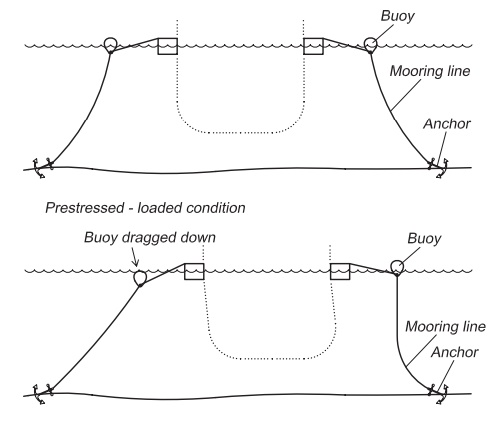Chapter: Aquaculture Engineering : Sea Cages
Mooring systems
Mooring systems
The function of the mooring
system is to keep the farm in a fixed position and to avoid transfer of
excessive forces to the cages, especially vertical forces. Different methods
are used for mooring depending on the type of cage, how exposed the sites are
to the weather, and the requirement for position exactness. Two major systems
are used for mooring: pre-stressed and slack (Fig. 15.15). Slack mooring is
used to moor ships which drift around one anchorage point. Such mooring systems
are well adapted for stiff constructions such as ships. Few cage farming
systems are stiff and therefore pre-stressed mooring systems are most often
used, but slack mooring has also been tried.24 Pre-stressed systems
are well adapted for use in flexible constructions, and in correctly designed
systems the forces will be equally spread over the entire farm. Pre-stressing
of the mooring system is performed at high tide and forces can be up to several
tens of kilonewtons.


A special type of mooring is
needed for tension leg cages in which the forces are taken up in
the tension legs which, regardless of the weather conditions, are always under
tension. In this way the dynamic loads resulting from the weather, that affect
traditionally moored cages and create slack and tension in the lines, are
avoided. The challenge when constructing tension leg moorings is to find
technical solutions where the legs will always be tensioned.
A pre-stressed mooring system
contains three major parts (Fig. 15.15):
·
Mooring lines which include the point of attachment to the cages
·
Buoys
·
Anchors.
Related Topics